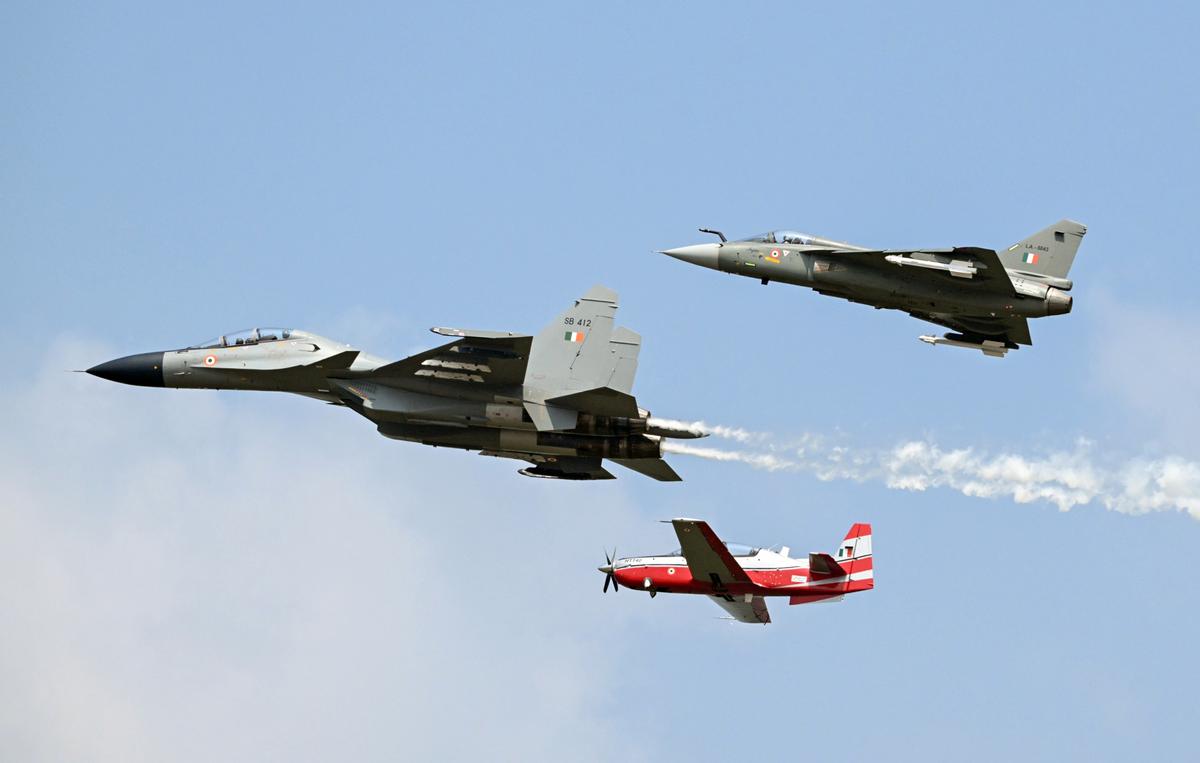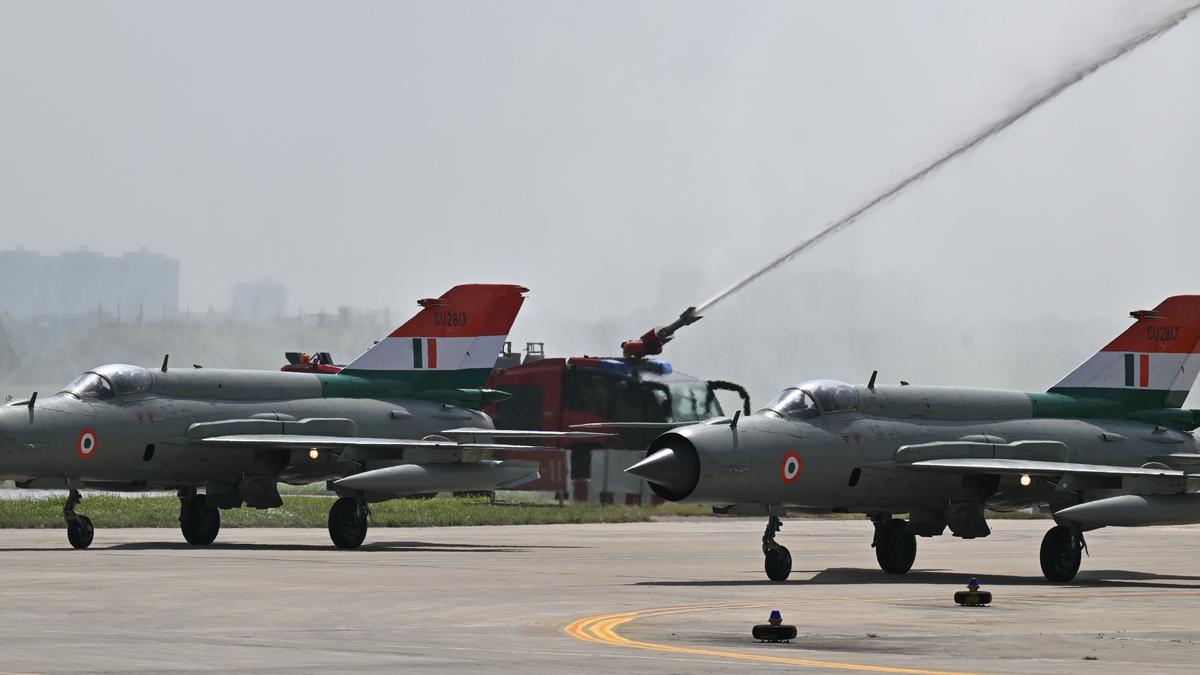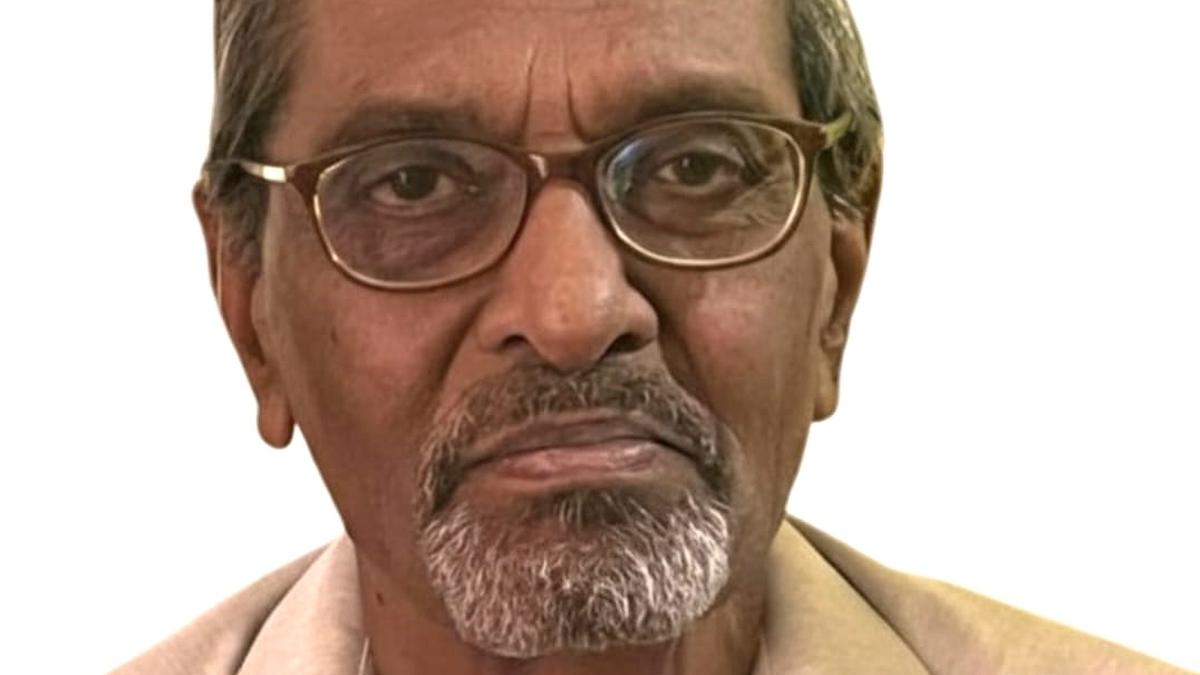On October 17, about 800 people of the Hindustan Aeronautics Limited (HAL) gathered at Nashik in Maharashtra. They sat flanking the runway of HAL’s facility, witness to the maiden flight of the Light Combat Aircraft Tejas Mk1A. There, they watched three aircraft roar into the sky: a trainer on which pilots learn, a Russia-origin Sukhoi Su-30, and the new Light Combat Aircraft Tejas Mk1A. After some manoeuvres in the sky, the aircraft landed, and the Tejas was ‘christened’: Two fire engines stood on either side of the runway and saluted it with water cannons.
On September 26, 2025, over 1,300 km away at Chandigarh Air Force Station, Air Chief Marshal Amar Preet Singh, India’s Chief of Air Staff, taxied onto the runway. Then in a swoosh, he and two others soared into the skies in MiG-21 Bisons, flying in the badal , or inverted-V formation. Thunderous applause erupted from more than 1,000-odd people who has gathered there. Veterans, pilots, engineers, and all those who had once been part of the aircraft’s journey, bid it goodbye.
The farewell reached its symbolic conclusion when the commanding officers of No. 23 and No. 28 Squadrons handed over the Form 700 — the aircraft’s detailed logbook documenting every repair, inspection, and maintenance throughout its lifetime — to Air Chief Marshal Singh, marking the official decommissioning of a fighter plane that had flown since 1963.
With the retirement of its last MiG-21 squadrons — No. 23 Panthers and No. 3 Cobras, which together operated 36 jets — the IAF has 29 fighter squadrons, against a sanctioned strength of 42. This has been the lowest since the 1960s.
The new Tejas is meant to take the place of the now-decommissioned MiG. However, delays have resulted in a gap in the IAF, with the full Tejas fleet Mk1A only available about four years down the line. Also, experts say, India is producing fighter jets a couple of generations behind, compared to other countries like China.
MIG 21 Aircraft during its retirement ceremony after completing service of around 62years at the Chandigarh Airbase in Punjab on September 26, 2025.
| Photo Credit:
R. V. Moorthy
The MiG lag
At the MiG’s exit, Defence Minister Rajnath Singh said the plane’s legacy would inspire the development of indigenous fighters. Brought to India in 1963, it was made here since 1971 by HAL, with transfer of technology and knowledge from the then-USSR (Union of Soviet Socialist Republics). The MiG was part of almost all India’s conflicts, from the 1971 war with Pakistan to Kargil in 1999, and then Balakot in 2019. With 11,500 units worldwide, 872 just in India, it wasthe largest produced fighter jet ever.
However, it also needed a new-generation substitute. There have been many policy promises through the decades, since the early 1980s, when India conceived of an indigenousLight Combat Aircraft (LCA) programme that would produce fighter jets to replace the aging MiG-21. For over a decade now, successive chiefs of the Indian Air Force (IAF) have flagged the urgent need for more fighter aircraft to maintain a combat edge over India’s adversaries.
At the Tejas Mk1A first flight in Nashik, HAL chairperson and managing director D.K. Sunil, said, “The focus is now on producing the LCA.” However, Air Marshal Dilip Kumar Patnaik (retired), who served as the Air Officer Commanding-in-Chief, Eastern Air Command, says the focus needs to be on indigenous development of advanced medium combat aircraft (AMCA) and engine solutions must be top priority.
“The LCA Mk1A is considered a stopgap to maintain numbers and pilot training. It’s a 4 to 4.5 generation aircraft at best, while the AMCA project faces delays and user-friendliness challenges,” he says. Plans, he adds, must account for long-term needs (50-60 years), requiring capabilities like long-range missiles and self-protection. Immediate gaps need filling, but even current options will take 4-5 years to implement.
AMCA is India’s first indigenous fifth-generation stealth fighter, touted as the next big leap. Expected to take flight within this decade and enter service by 2035, it represents India’s ambition to compete in the high-end aerospace domain. However, as Air Chief Marshal Singh admitted, “It is a tough task if we look at the trajectory of the LCA Mk1. But this time, with greater private sector participation, timelines are achievable.”
MIG 21 Aircraft during its retirement ceremony after completing service of around 62 years at the Chandigarh Airbase in Punjab on September 26, 2025.
| Photo Credit:
R. V. Moorthy
The focus of the IAF
The first variant of the Tejas (though it was not called that then) took its first flight test in 2001. Currently, the jet is operational with No. 45 Flying Daggers and No. 18 Flying Bullets at Sulur Air Force Station, with additional squadrons planned.
The upgraded Tejas Mk1A, equipped with superior radar and enhanced maintainability, is expected to bolster IAF’s combat capability. However, delivery delays have been a concern. In February, IAF Chief Air Chief Marshal A.P. Singh said HAL was lagging in its schedules.
Currently, HAL receives two GE F404-IN20 engines per month from GE Aerospace, which got the contract in 2021.
There have also been delays from GE. If things go according to plan, 83 Mk1A aircraft will be delivered by 2029. For an additional 97 Tejas jets, contract negotiations are in the final stage with GE.
The IAF chief has underlined the pressing arithmetic of force modernisation. “To maintain a comfortable strength, we need two squadrons — around 30 to 40 aircraft — produced every year,” he said. “Replacement is not a choice; it’s a necessity.”
The shortfall isn’t new. As far back as 2016, then IAF Chief Arup Raha had warned that the 36 Rafales, commissioned into the force in 2020, were inadequate and that India needed at least 200–250 additional fighters and a parallel indigenous production line to sustain operational readiness. Rafales are France-made multirole fighter aircraft, also not the newest fifth generation ones.
Hindustan Aeronautics Limited (HAL) Tejas Mark 1A, a light combat aircraft takes off ahead of its maiden flight at HAL Nashik, India, October 17, 2025. REUTERS/Francis Mascarenhas
| Photo Credit:
Reuters
Future combat
Nearly a decade later, the warning echoes louder than ever — the numbers still haven’t matched the ambition. According to sources in the Ministry of Defence, the government is looking at finalising the contract for 114 Rafale fighter jets with at least 18 being delivered off-the-shelf as early as next fiscal year.
The more advanced LCA Mk2, a 4.5-generation fighter intended to replace the Mirage-2000, Jaguar, and MiG-29 fleets, is still in development. Conceptualised in 2012, its first prototype has been delayed multiple times, with that now expected around 2026.
Speaking at an event in Delhi, Deputy Chief of Air Staff Air Marshal Awadhesh Kumar Bharti underlined that while the IAF is banking on Tejas Mk2 and AMCA for the future, immediate gaps must be addressed. He confirmed that a contract for 97 additional Tejas Mk1A fighters was signed last week, supplementing the 83 already on order.
The director general of think tank Centre for Air Power Studies (CAPS), Air Vice Marshal Anil Golani (retired) says more advanced aircraft are needed. “The government needs to fast-track the procurement of multirole fighter aircraft. They should also focus on engine design development through strategic partnerships, increase indigenous capability in long-range standoff weapons, secure communication data links and counter-UAV (unmanned aerial vehicle) systems,” he says. He hopes for privatisation, to accelerate progress. Now, only HAL manufactures fighter jets.
He adds that there’s significant interest from various countries, particularly in South America, Southeast Asia, and Africa, for India-made LCAs, because the machine can integrate different systems. Right now though, the IAF is expecting the delivery of 12 Tejas Mk1A by March 2026.

LCA Tejas Mk1A completes maiden flight as the Union Defence Minister Rajnath Singh inaugurates the third Tejas production line and the second HTT-40 line, at HAL in Nashik on Friday.
| Photo Credit:
ANI


